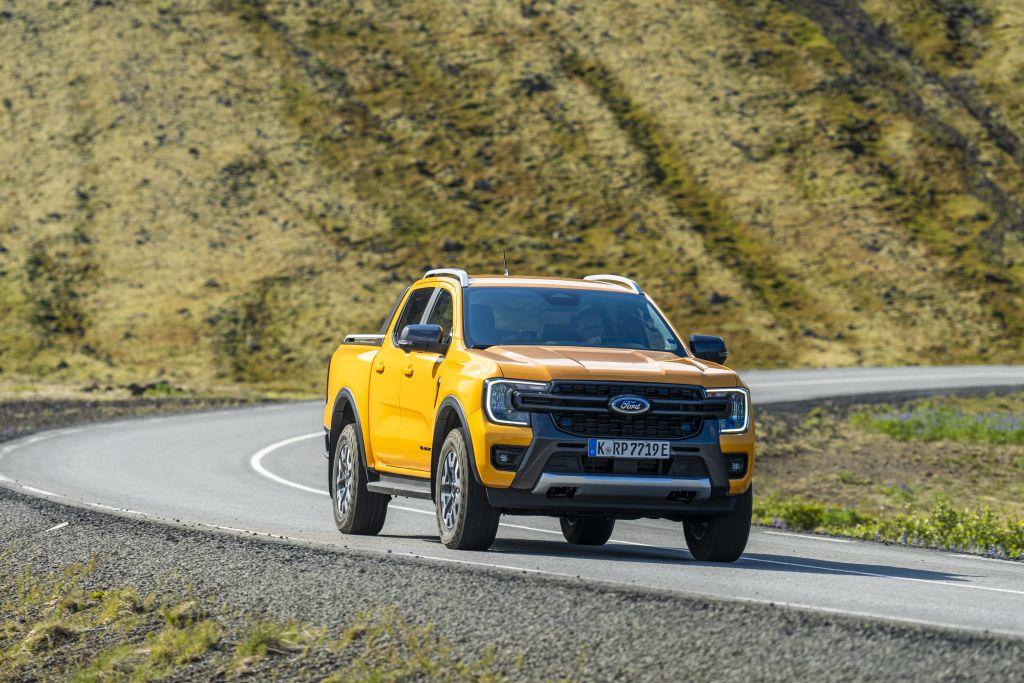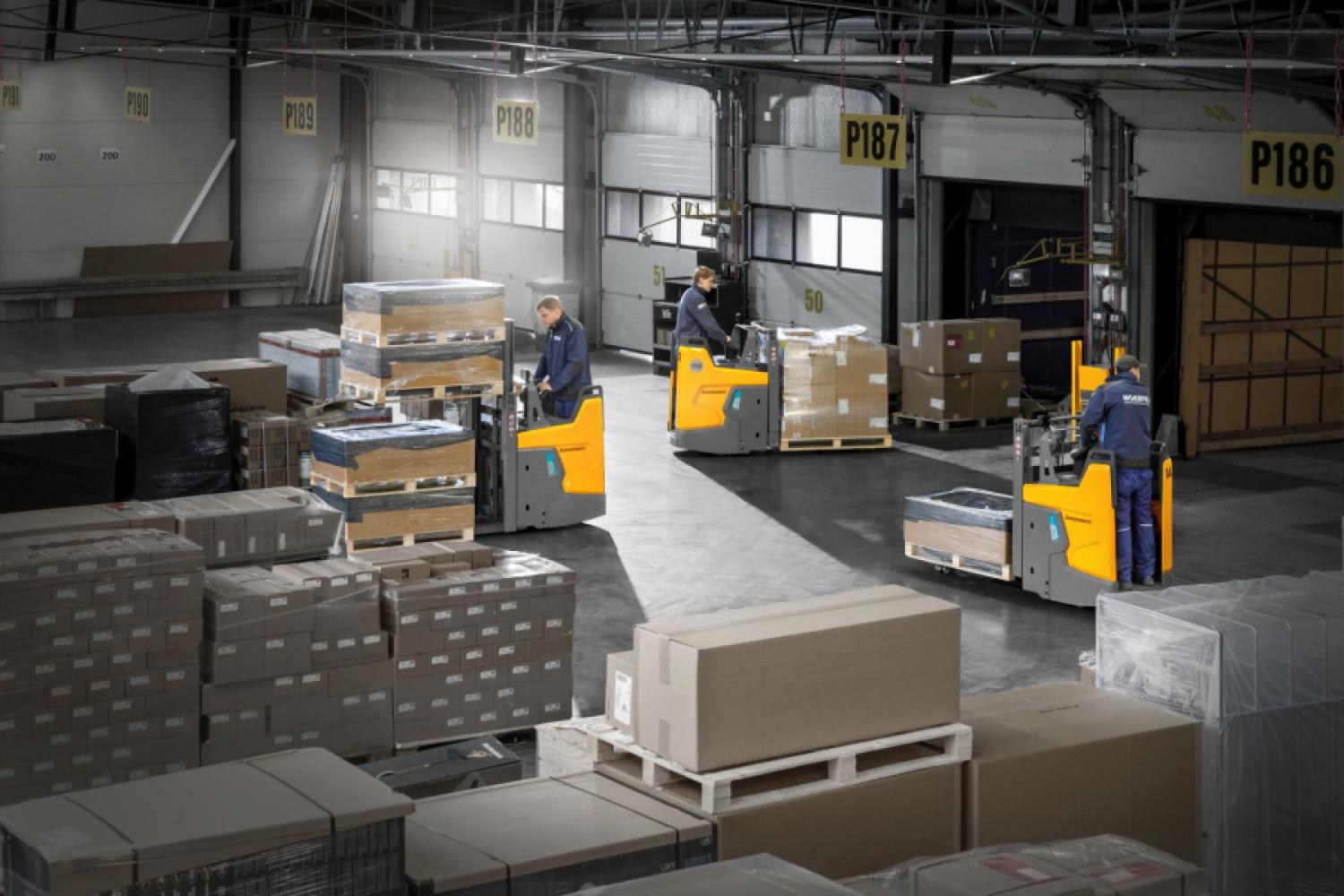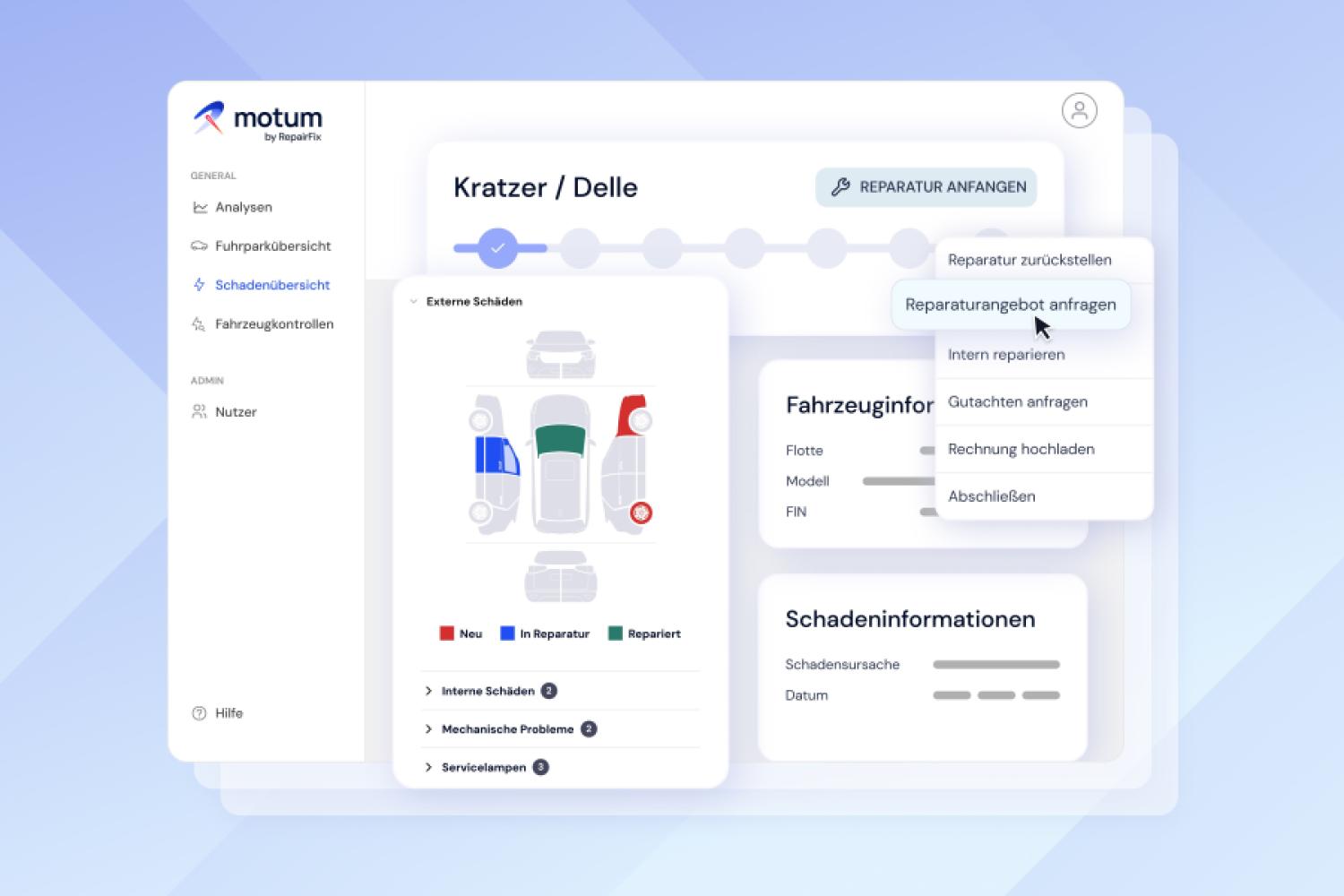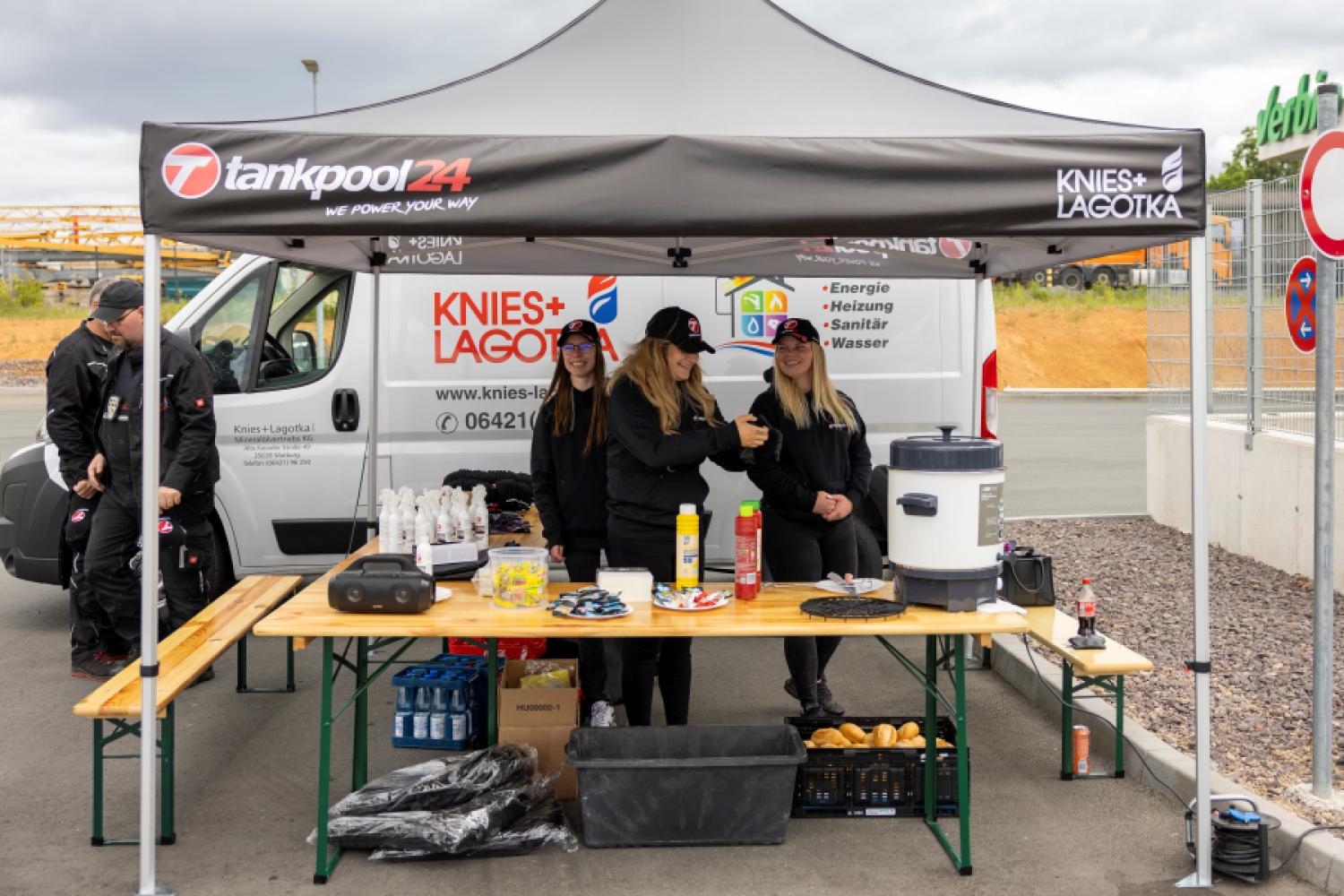Is it still needed? This question arises spontaneously when, in the year 2025, ten years before the hopefully reliably decided EU combustion engine phase-out, you consider the data of the new Ford Ranger Plug-in Hybrid. The pick-up with the dual-heart is supposed to be able to drive 43 kilometers electrically. Manageable, considering that in the USA, Ford has long introduced the all-electric and competent pure electric pick-up F150 Lightning, which, despite convincing product features, high performance and range, as well as spectacular design, exerts little pull on customers.
And not just since Trump pulled the plug back to the future, willfully drying up the delicate seedling of e-mobility in the USA to the detriment of its own industry and electric pioneers like Ford. Okay, for Europe the Lightning would be too big, too heavy, too much of everything: 5.90 meters long, 2 meters wide, 450 HP, 0-100 km/h in 4 seconds, 385 and 514 km range with massive 98/131 kWh battery …
Nevertheless: In Europe, new and bold Chinese rivals like Maxus are emerging, having recently unveiled with the eTerron 9 a similarly formatted, pure electric pick-up for the European market. So, what Ford embarks on with the hybrid seems almost a bit “late.” However, it still leaves its archrivals Toyota behind, who so far can only offer a mild hybrid of their no less legendary Hilux – and focus on fuel cells instead of batteries for pick-ups. But the Hilux Fuel Cell will still take a while. The disadvantage of pure BEVs: Especially pick-ups become incredibly heavy and can hardly carry freight within the 3.5-ton regulations. In this respect, the PHEV makes sense again.
A hybrid to convince e-skeptics
Meanwhile, Ford wants to lure the rather e-skeptical customers with “open transporters” with a package that should not mean giving up diesel, quite the opposite, as Jim Baumbick, Vice President Development, Ford USA, explains to VM. The PHEV opens up new possibilities that customers need to learn about. Thus, the Ranger PHEV, which is priced above the standard diesel but below the top model, appears with exactly the same features as the diesel model.
That means: 3.5 tons towing capacity are set, nearly a ton of payload as well, and the generously and practically designed loading area with extra robust Easy-Lift tailgate of the 5.35-meter vehicle (1.92 m wide, 1.87 m high) easily fits a Euro pallet, with 1.22 m between the wheel arches and 1.64 m loading length. But on top, you add
electrical goodies like a so-called Pro Power Onboard unit, which allows external devices like tools to be operated with optionally 6.9 kW power (2x3.45 kW) or in the basic version with 2.3 kW. The Ranger thus becomes a rolling power bank. People are very creative in its use, as Baumbick reports from experiences with the F150 Hybrid in the USA. For example, in disaster relief or when the power goes out at a wedding. It is definitely better and more environmentally friendly than the usual "gas-powered generators," says Baumbick.
Although the potential "consumers" naturally draw power from the 11.8 kWh lithium-ion battery, further reducing the not particularly impressive electric range of 43 kilometers. Ford, however, says this is more than half of what Ranger customers cover daily, so it’s enough. Recharging takes four hours in AC mode at a rather slow 3.7 kW. Fast charging is not initially planned.
No compromises, various advantages
Yet the addition of an electric part-time drive brings further tangible benefits: The combination of the globally used 2.3-liter four-cylinder turbo petrol engine, 75 kW e-motor with 300 Nm, and a 10-speed hybrid transmission resulting in 697 Nm and 207 kW system performance ensures a smooth start from a standstill – and the ability to use its impressive 2.5-ton self-weight when downhill braking or coasting to recuperate. This incidentally saves operational costs and simply drives smoothly and elegantly, as with electric cars.
Especially off-road, the e-motor has its undeniable charm as a generator. An electronically controlled clutch mechanism regulates power transmission between the combustion engine and the electric motor depending on the driving program selected – thus optimizing drive efficiency and the available torque, Ford engineers sketch. More than just theory: This, for example, has a positive effect when towing a trailer or driving off-road.
The new form of power transmission thus also simply improves smoothness and ride comfort. The switches between the individual drive types are as promised quite seamless. If the start-stop system temporarily turns off the petrol engine at a red light or in stop-and-go traffic, the standard two-zone air conditioning continues to run electrically.
Electrified: Superior to diesel off-road
Off-road, the e-4WD all-wheel-drive system of the Ranger Plug-in Hybrid can automatically send the torque of the petrol, electric, or hybrid drive to all four wheels in tricky driving situations. Delicately dosed, one can also creep completely electrically and magically quietly through off-road terrain because the powertrain makes no difference whether the power comes from the e-machine or
the combustion engine – as long as there is juice in the battery, electricity takes priority. Additionally, a transfer case with reduction gearing and a locking rear differential supports propulsion. Driving modes available include Normal, Eco, Sport, Slippery, Tow/Haul, Mud/Ruts, and Sand, allowing torque distribution to adapt to respective conditions.
As usual, you can also choose whether the e-drive runs automatically, immediately, later, or whether the petrol engine, energetically questionable, charges the battery while driving. Quite sophisticated, all this, and the plug-in hybrid makes the “good old diesel” look quite outdated. And sound outdated too, as the PHEV, not least thanks to the use of Active Noise Cancelling technology, is a very quiet drive, especially for a rather rustic vehicle like a pick-up.
Smoother progress
The same goes for the driving characteristics of the traditionally rigid-axled rear, and thus in terms of suspension typically "rigid" and inherently "stiff-hipped" steel frame transporter. For the PHEV, the tuning has been adapted, enabling handling and comfort at the diesel level. No question that Ford also transferred the driver assistance from the diesel, and the PHEV is not lacking with its standard Pre-Collision Assist, active lane-keeping assistance, and reversing camera. Even an intelligent adaptive cruise control is not absent. In steep terrain, front and rear cameras prove to be very helpful, providing visibility where personal sight ends.
Modern times also in terms of trailer operation: Thanks to Trailer Backup Assist, the combination can be maneuvered via a rotary knob in the center console and the 12-inch central screen. The Ranger PHEV also has absolutely no problems with the trial-driven two-ton tandem axle trailer. Thanks to large mirrors, maneuvering is easy even without assistance.
Solid Equipment
Overall, the interior is modern: Even the basic XLT model comes with the increasingly user-friendly SYNC-4 infotainment system, 8-inch digital display, induction charging cradle for mobile phones. The Wildtrak adds further aesthetics and equipment, such as a 360-degree surround light for working on the vehicle in the dark. The Stormtrak comes with a powerful B&O sound system with ten speakers, Matrix LED lights, and the standard 2.3 kW on-board charger, as well as a sport bar over the loading area. Ford’s great art with pick-ups is traditionally the high individualization possibility through accessories, from loading area covers and canopies to bike carriers or rooftop tents.
Lower Costs: Electricity Saves
Last but not least: Ford also forecasts lower operating costs for the PHEV, albeit compared to the 3.0-liter V6 top-diesel, roughly comparable in performance
and price: At a daily mileage of 80 kilometers and using commercial electricity, one can save a good 1,000 euros annually. Also because in everyday life, energy consumption is supposed to be lower than with diesel, with a range comparably thanks to an 80-liter tank, about 600 kilometers is indicated at the start of the trip. In the not entirely realistic WLTP, a “sparrow-thirst” of 3.1 l/100 km is reported for a 2.5-ton vehicle. We also achieve this over 50 kilometers when the battery is full. However, consumption then continuously increases, especially when the EV Charge mode is activated. With about 8 l/100 km, you have to reckon with increased petrol operation, which the diesel also consumes.
“The Ranger Plug-in Hybrid can do everything any Ranger can. In addition, thanks to its versatile electric drive, it offers more torque than ever before and other advantages such as locally emission-free driving and charging electrical devices even in remote locations,” says Hans Schep, Managing Director, Ford Pro Europe.
From its unit, the clearly leading pick-up in Europe with over 40 percent market share is developed and distributed. For ten years in a row, the Ranger has been leading the field, achieving over 50 percent in markets such as Germany and the UK.
Who needs a pick-up? The "work-and-play" clientele
The big question, of course, is who are the pick-up users: Before developing the latest Ranger generation, Ford surveyed more than 5,000 customers. As a result, many Ranger buyers use their vehicle professionally for their own business during the week and as a private car on weekends, which the equipment lines should reflect. Hans Schep calls this “work and play.” Many small businesses have high demands on a “workhorse.”
And for the Cologne-based professional division, it goes without saying that flexible financing, charging solutions, or telematics and software services are also part of the package. You can’t build a bridge much better than this. Until there is a purely electric Ranger, which Jim Baumbick also considers realistic for Europe. For now, he sees the PHEV as an appropriate solution, hitting the "sweet spot" between the demanded payload and emissions reduction. Let’s see if customers see it that way too. Convincing should also be the fair pricing: With the rather simple XLT line, the plug-in hybrid costs 53,180 euros, then in the more eye-catching Wildtrak version 62,225 euros, 4,500 euros cheaper than the V6 diesel Ranger with 66,990 euros. If that's not an argument to leave the diesel






